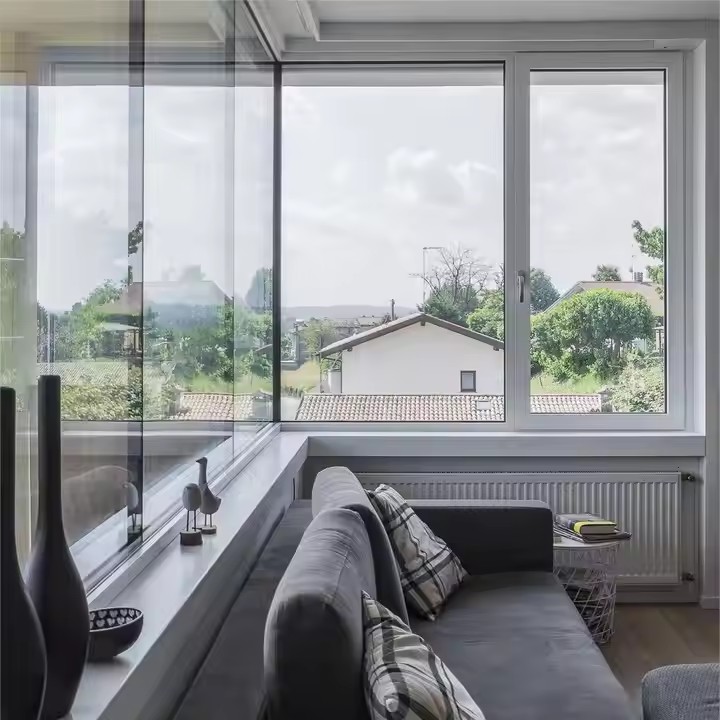- Material Selection
1.1 Window Frame Materials

Aluminum Alloy: Aluminum alloy has high strength and hardness, allowing it to withstand certain levels of wind pressure and external impacts. When selecting aluminum alloy materials, manufacturers should consider the alloy composition. For example, adding appropriate amounts of magnesium and silicon can improve the strength and corrosion resistance of aluminum alloy. Furthermore, high-quality aluminum alloy profiles are often subjected to heat treatment and other processes, which further enhance their mechanical properties, making them resistant to deformation during long-term use. Aluminum alloy comes in various colors, offering a wide range of options for customers. Regardless of your home style or preferred color, aluminum alloy can generally meet your needs well. Additionally, aluminum alloy performs excellently, even under harsh weather conditions, without being affected by adverse weather. If you need high-performance, high-quality casement windows, you can choose Dingtuo Door and Window Industry Co., Ltd., contact via WhatsApp at +8613809889264. For quality windows, choose Dingtuo—customer satisfaction is our highest pursuit.
PVC Steel: PVC steel window frames are primarily composed of PVC plastic profiles and a steel core. When selecting PVC materials, it is crucial to ensure high quality and good anti-aging properties. High-quality PVC can effectively resist aging and deformation caused by UV rays and temperature fluctuations. The steel core must meet thickness and strength standards to provide sufficient support, preventing the frame from bending over time. PVC steel is highly UV-resistant, making it a good option for regions with strong sunlight and high UV exposure. The material is very adaptable to harsh weather conditions, with a long service life, so you don’t need to worry about replacement after just a year or two, thus saving on economic costs.

1.2 Hardware Components
Hinges: Hinges are a key component in the opening and closing process of casement windows. Manufacturers should choose hinges made of stainless steel or copper alloy. Stainless steel hinges offer excellent corrosion resistance, allowing them to be used for extended periods in humid environments without rusting. Copper alloy hinges have high strength and toughness, and with appropriate surface treatment, they can withstand frequent opening and closing without damage. Hinges are often used in windows and doors, and they affect the smoothness of daily use. If hinges rust in rainy or humid conditions, it may impact the window’s functionality. Therefore, hinges should be made from stainless steel for durability.

Handles: The material of the handle is also important. Zinc alloy or aluminum alloy handles are typically good choices. These materials not only have sufficient strength but can also be surface-treated, such as anodizing or painting, to improve wear and corrosion resistance, ensuring that the appearance and function of the handle remain unaffected during long-term use. Handles are used daily, so the quality of the paint is critical. If low-quality paint is used, it may chip off easily, affecting the appearance of the handle.
Locks: Locks should be reliable products, such as stainless steel lock cylinders and high-strength lock bodies. High-quality locks ensure the security of casement windows and remain functional after long-term use without losing their locking ability due to rust or wear. The choice of lock material is essential for safety, as locks are designed to prevent theft. The type of lock—whether mechanical or electronic—also impacts its security level and cost. For areas where valuable items are stored, electronic locks are recommended due to their higher security compared to conventional locks.

- Design and Structural Aspects
2.1 Window Frame Structural Design
A reasonable cross-sectional design of the window frame can improve the stability of casement windows. For example, a multi-chamber structure in the window frame can increase the effective thickness of the frame, improving wind pressure resistance. This multi-chamber structure also provides excellent thermal and sound insulation. When designing the connection points of the window frame, it is essential to ensure that the connections are solid, using methods such as tenon joints, welding (for metal frames), or specialized connectors to form a stable, integrated structure. The frame material should have good toughness. For example, if the window is located on a higher floor where wind is stronger, it’s crucial to choose a glass that can withstand wind pressure and is durable.

2.2 Window Sash Structural Design
The size and proportion of the window sash should be reasonably designed according to the dimensions of the frame and actual usage requirements. An overly large sash can compromise stability, leading to deformation or difficulty opening and closing. The thickness of the sash frame and the design of reinforcement ribs are also critical. Increasing the frame thickness can enhance the sash’s rigidity, while strategically placing reinforcement ribs, such as around the glass mounting grooves, can effectively distribute the weight of the glass and external forces, preventing the sash from warping. The design of the window sash should meet the user’s specific needs. Casement windows for garden villas, office buildings, large shopping malls, etc., vary in design. Each window frame should be customized according to the user’s requirements, whether it’s square, arched, or rectangular, to best suit the intended installation location.


